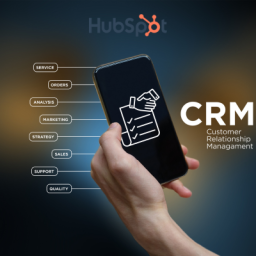
Problem Statement:
One of our precious telecom service provider client was using HubSpot for managing business and customers, initially it was a good fit, however as business grew they began to experience limitations. Major limitations were
- Limited customization
- High cost
- Lack of integrated project management features
- Data Management
Solution Overview:
Migrating to Bitrix24
With Bitrix24 identified as the ideal platform, Client decided to move forward with the data migration process. Our approach was structured to ensure a seamless transition, with minimal disruption to their daily operations. Here’s how we handled the migration:
- Initial Data Audit and Preparation: Before the migration began, we performed a full audit of the client’s data in HubSpot. This included customer records, contact details, deals, sales pipelines, and any custom properties they had set up. We worked closely with their team to clean up unnecessary or outdated data, ensuring that only relevant information would be migrated. This also helped streamline the process and improve the accuracy of the data once transferred.
- Mapping HubSpot Data to Bitrix24: The next step was to map the data fields from HubSpot to Bitrix24. While both platforms offer robust CRM functionalities, their structures and naming conventions are different. We worked with the client to map each data point—such as contact details, deal stages, and tasks—to the correct fields in Bitrix24. This step was critical in ensuring that the data was transferred without any loss of information or functionality.
- Customizing Bitrix24 to Fit Business Needs: Bitrix24 offers extensive customization options, something that was lacking in HubSpot. During the migration process, we worked with the client to tailor Bitrix24 to match their specific needs. We customized their sales pipeline, set up automated workflows for task management, and configured dashboards that would give their team better visibility into both sales and project management activities.
- Data Migration and Testing: Once the data mapping was complete, we began the migration process. This involved exporting data from HubSpot and importing it into Bitrix24 using specialized migration tools. To ensure accuracy, we conducted the migration in phases, testing each step to confirm that all data transferred correctly. Any discrepancies or errors were addressed immediately, with ongoing communication with the client to ensure their satisfaction.
- Training and Support: After the migration was complete, we provided comprehensive training to the client’s team. Bitrix24 offers a wide range of features that weren’t available in HubSpot, so we made sure that their team was fully equipped to use the new platform to its full potential. We offered both in-person and online training sessions, focusing on CRM management, project tools, and workflow automation. Additionally, we provided ongoing support for the first few weeks post-migration to address any questions or issues that arose as they adapted to the new system.
Benefits Delivered:
The migration from HubSpot to Bitrix24 was completed successfully, and the client quickly saw the benefits of their new CRM system. Some of the key results include:
- Increased Flexibility and Customization: The client now has a CRM platform that can be fully customized to fit their evolving business needs. They’ve been able to modify workflows, pipelines, and data fields to better reflect their sales and project management processes.
- Cost Efficiency: Bitrix24’s pricing structure, which offers a flat rate for unlimited users, has significantly reduced the client’s CRM costs. They can now scale their operations without worrying about the rising subscription fees they experienced with HubSpot.
- Integrated Project Management: With Bitrix24’s built-in project management tools, the client can now manage customer relationships, sales processes, and projects all within one platform. This has eliminated data silos and improved collaboration between their sales and operations teams.
- Improved Data Visibility: By consolidating their data into one system, the client now has a unified view of their customer interactions, project statuses, and sales pipelines. This has allowed their teams to work more efficiently and make more informed decisions.
- Streamlined Workflows: The client has been able to automate many of their processes using Bitrix24’s workflow automation tools. This has saved their team valuable time and allowed them to focus more on strategic tasks, rather than manual data entry and administrative work.





